designed for the way women work.
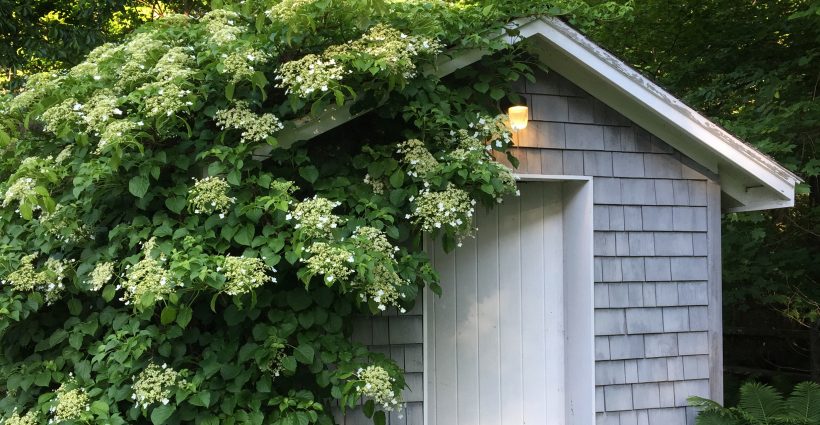
Growing Flowering Vines
Category: Flower Gardens, How-To Projects, Plant Ideas & Info, Presenting "The Curious Gardener", Spring Projects
There’s something romantic and old-fashioned about flowering vines, the way they amble over garden fences and climb up trellises. If you’re thinking of planting an ornamental vine in your garden this year, know what some of the different types are by reading on.
The basic types of vines are those that cling to a support with aerial roots, those that twine or grow tendrils that wrap around a support, and those that need our help attaching to a support.
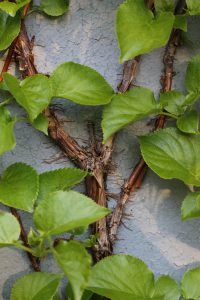
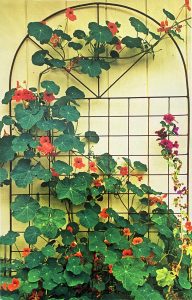
Climbing Hydrangea (hydrangea petiolaris) is a perennial, shade loving vine that attaches to its structure via aerial roots that are like suction cups. This kind of vine can grow up a tree trunk or the side of a house with no help from you. It grows slowly enough that you can prevent it from doing damage to shingles or siding by redirecting it when necessary. It takes 2-3 years to become established but then it becomes a vigorous grower that gets fuller every year. Another vine in this category is English Ivy, which I avoid because it is so vigorous it’s hard to control.
Most vines are in the twining and wrapping category, and there are many that are annuals. The advantage of growing annuals is that once they start blooming they continue blooming throughout the season and often well into the cool weather of early fall. With an annual vine you need to plant a new one each year, and most want full sun, but they grow fast. Annual vines include Morning Glory, Nasturtium, Sweet Pea and Black-Eyed Susan Vine, among others. Their tendrils will wrap around narrow surfaces such as metal frames and small wood stakes. Don’t expect them to twine around a broader structure such as a fence post without your help supporting it. I’ve grown Black-Eyed Susan with success in a container, and I’ve grown nasturtium but never tried training it up a structure, so I plan to try that this year. I was inspired by an image from a magazine article I cut out years ago. I also started Sweet Pea from seed this year and can’t wait to put those out in the garden to see what they will do. They are known for their sweet fragrance. In early April we sent out free packets of Sweet Pea seeds from Fruition Seeds with every purchase (while supplies lasted), so hopefully we have plenty of customers who are also growing Sweet Pea from seeds this year. Let’s hear from you!
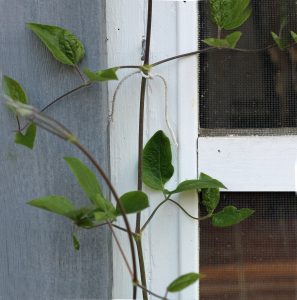
Perennial vines such as clematis have tendrils that wrap around narrow supports including branches of neighboring plants. I like allowing my clematis to amble over a spring-blooming shrub it’s planted next to, to add a touch of color later in the season. If you want your clematis to climb up a wall or a structure such as a gate you need to help it along. I use teacup hooks and string to direct my clematis ‘Jackmanii’ up the outside of our screened in porch. Japanese Honeysuckle is perhaps one of the bestknown perennial vines but is considered invasive in many parts of the US because it spreads and overtakes native plant species.
Climbing roses are one of the most beautiful and fragrant perennial vines of all, though they are not often described as a vine. They do not put out tendrils or suckers but can be trained up an arch or over a fence to create a heavenly picture.
For supplies when planting your flowering vine, including twine, scissors, a bucket caddy and gloves, click here to check out the Garden Supplies section of our website.
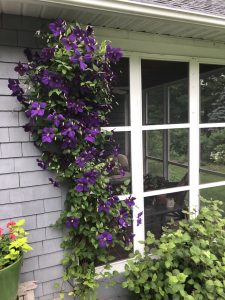
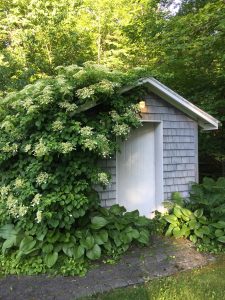



Lonicera sempervirens is a perennial honeysuckle vine that is native to eastern United States and a favorite of Ruby-throated hummingbirds, as well as birds, butterflies, and bees.
Thank you for adding that suggestion!